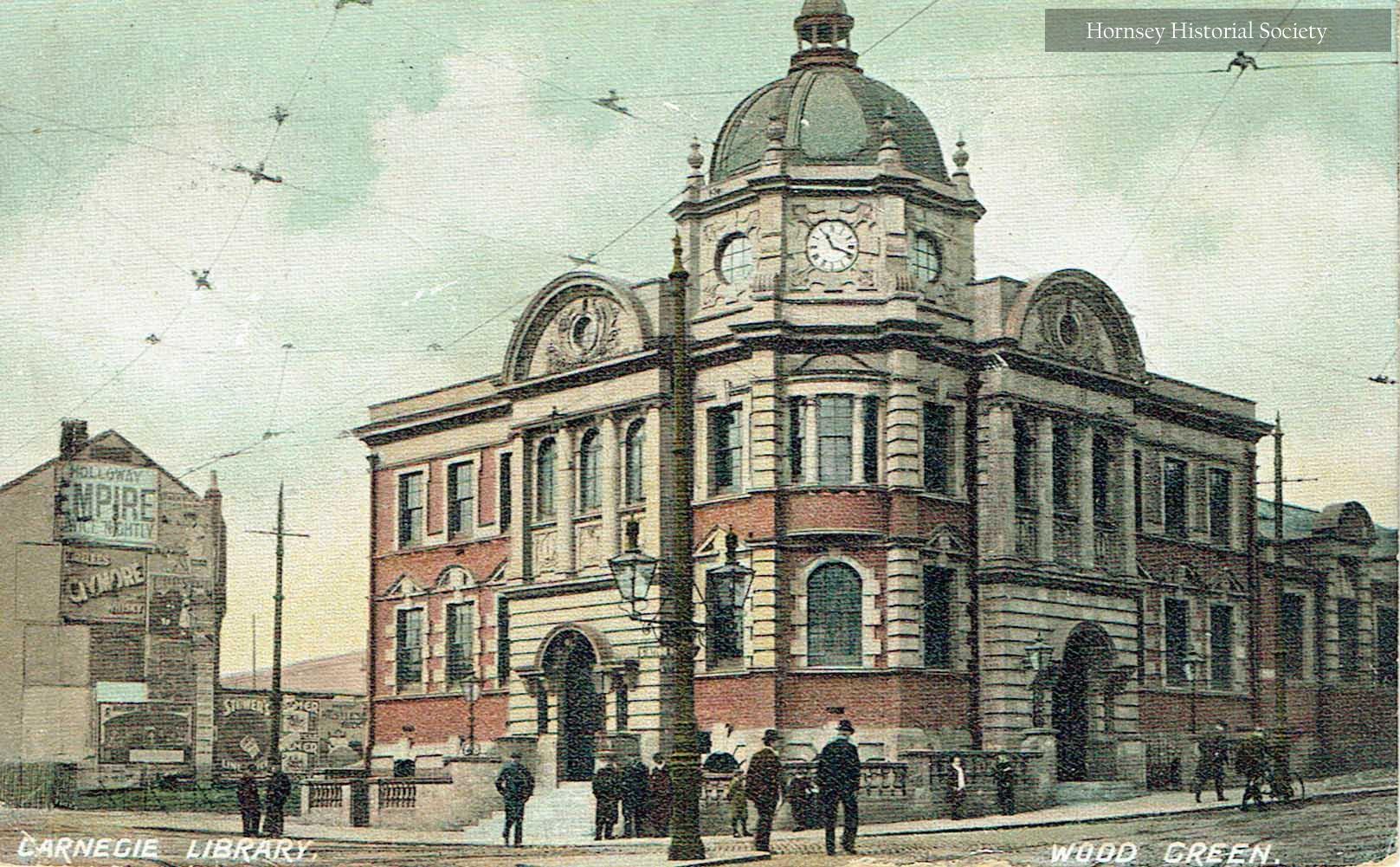Present day Wood Green forms part of the London Borough of Haringey and is situated about six miles north of the City of London.

A bustling place
Wood Green is an established residential area and well known for its bustling Shopping City and parades of shops along the High Road as well for the nearby Alexandra Palace and Park. It contains a number of late 19th century and early 20th century housing estates as well as post-war and more recent developments. As a result of the latter many features of earlier times have disappeared.
Wood Green, originally known as Woodleigh, began as a hamlet created around the junction of the road from London to Enfield to the north and the roads to Barnet to the north-west and the village of Tottenham to the east. These roads or tracks were probably established in Saxon times through the great forest that once covered much of the area north of London.
A welcome stop
In the 18th and early part of the 19th century, the high road from London to Enfield, once known as Green Lanes, was a droving road, a route down which people took their livestock by foot. Wood Green then with its pond, smithy and hostelry was undoubtedly a welcome stop before the final push to the London markets.
The population grows
In 1801 the population of Wood Green was only 100, which rose to 400 by 1844. It was after the creation of the Great Northern Railway, and the opening of Wood Green Station (now Alexandra Palace Station) in 1859, that the residential development began, accelerated by the Great Eastern Railway branch line from Seven Sisters with its intermediate stations at West Green and Green Lanes (later known as Noel Park & Wood Green) and terminus at Palace Gates from 1878.
Wood Green was originally a part of the Parish of Tottenham, and from 1850 governed by the newly created Tottenham Local Board of Health. It became an ecclesiastical parish in its own right in 1866.
By 1871 the population had risen to 501. In 1888 with the creation of the Wood Green Local Board of Health it became administratively separate from Tottenham, with a population of 23,000. Wood Green became an urban district council in 1894 and by 1901 the population was 34,233. Borough status was granted in 1933 when its population had reached over 54,000. Wood Green became part of the London Borough of Haringey in 1965 under the 1963 London Government Act.
Spouters Corner
The corner at the junction of the Wood Green High Road and Lordship Lane, opposite Wood Green Underground Station, was the location of Chessers farriers shop established in 1770 being the first commercial enterprise on the High Road.
Later it became known as Spouters Corner as a result of its use for political meetings and for public oratory from the mid-19th century until the 1970s. Thereafter it became the location of an open air market. Between 1997 and 2000 it was transformed, as part of a regeneration programme for the High Road, providing a Vue Cinema, a public house, shops and restaurants under the banner name Hollywood Green.
The Jolly Butchers
The High Road from Spouters Corner rises uphill towards St.Michael’s Church. This part of the High Road was once known as Church Hill but by the early 19th century it became known as Jolly Butchers Hill on account of The Three Jolly Butchers Inn, dating from 1781, located on the left hand side of the road.
The inn was transformed into an ornate Victorian public house in 1900 with plate glass, cupola and lanterns and demolished in the 1960s to make way for the present office block called Ashley House. With the loss of the pub, the name Jolly Butchers Hill has fallen from common use and would only now be known by older residents of Wood Green.
Another important feature of Jolly Butchers Hill is the Wood Green Bus Garage, now operated by Arriva with diesel buses. Beginning as a depot for horse-drawn trams in 1856, converted for electric trams in1904 and again for trolley buses in 1938 and then for motor buses in 1961. Today, it remains an important cog in the local transport network.